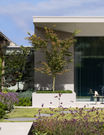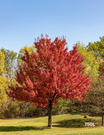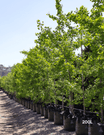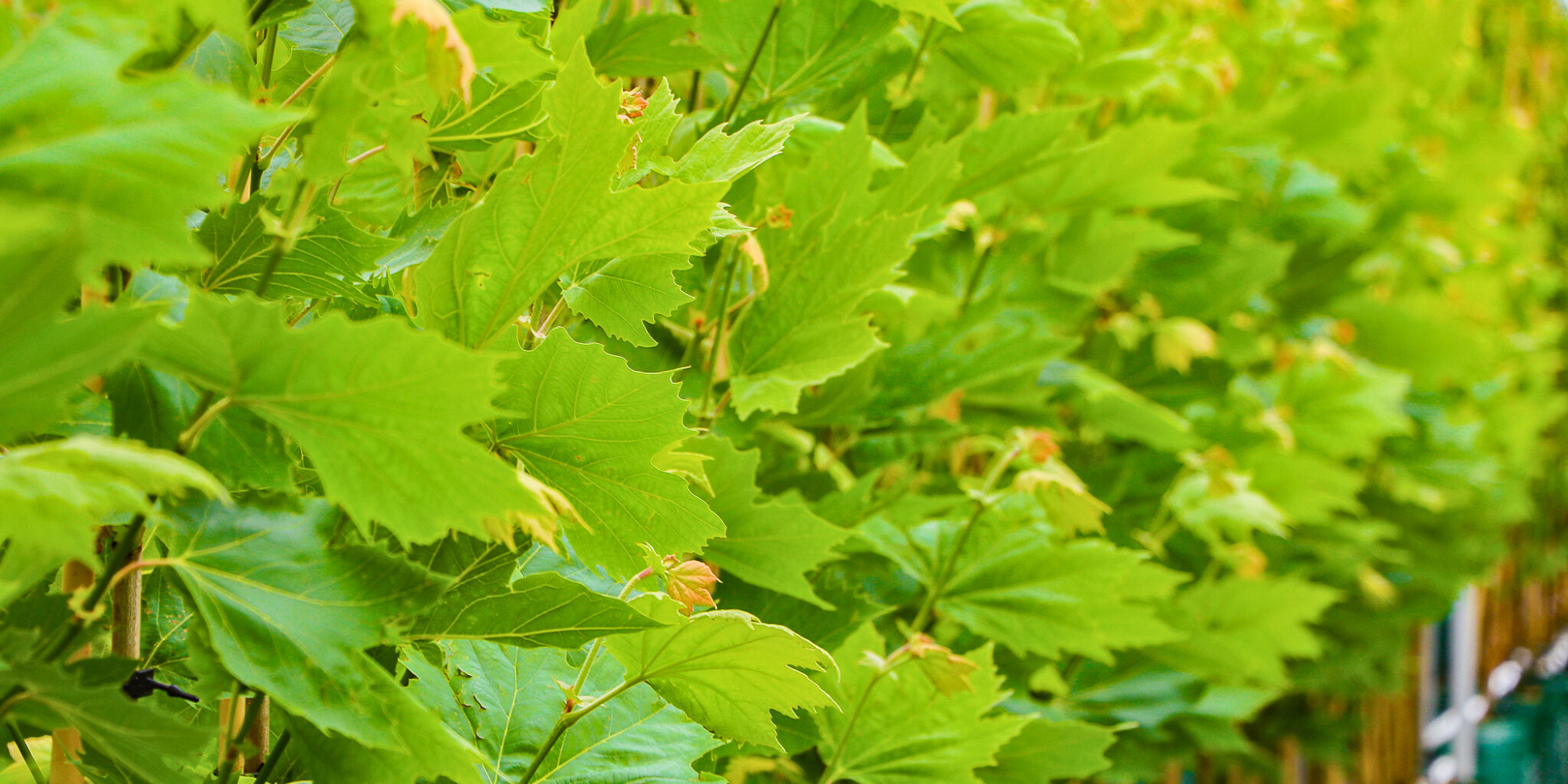Creating a thriving garden on less-than-ideal soil can be challenging, but with the right tree selection and care, you can transform even poor soil conditions into a beautiful, lush landscape. Certain trees are better equipped to tolerate and even thrive in these environments, whether you're dealing with sandy, clay-heavy, or nutrient-deficient soil. In this guide, we’ll explore three hardy trees that are perfect for gardens with poor soil conditions: Betula pendula (Silver Birch), Robinia pseudoacacia 'Frisia', and Eucalyptus camaldulensis (River Red Gum).We’ll also provide tips on amending soil conditions to support these resilient trees and ensure they flourish in your garden, no matter the challenges.
Betula pendula (Silver Birch)
Betula pendula, known as Silver Birch, is renowned for its striking white bark and delicate, airy foliage. This tree is visually captivating and incredibly adaptable, making it a perfect choice for poor soil conditions. Silver Birch thrives in sandy and acidic soils, often challenging for many other species. Its ability to survive in low-nutrient environments while adding an elegant touch to your garden makes it a standout option for luxury landscapes.
Key Facts:
- Mature Height: 10-15 meters
- Mature Width: 5-7 meters
- Best Uses: Feature tree, grouped plantings, or creating a light canopy in mixed garden beds
- Leaf Appearance: Small, triangular, serrated leaves that turn a beautiful yellow in autumn
- Rate of Growth: Fast-growing
- Tolerates: Sandy, acidic, and poor-quality soils
Why It’s Perfect to Add to Your Garden
The Betula pendula is an ideal addition to any high-end garden, offering a stunning contrast with its white bark and lush green leaves. This tree’s fast growth and ability to thrive in less-than-ideal soil conditions make it perfect for homeowners who want immediate impact without the long wait. Its light canopy allows dappled sunlight to filter through, making it a beautiful complement to ground cover plants or smaller shrubs beneath its graceful branches. As a bonus, the Silver Birch is low-maintenance, needing little more than occasional watering and pruning.
Robinia pseudoacacia 'Frisia'
For a splash of vibrant color in gardens with poor soil, the Robinia pseudoacacia 'Frisia' is an excellent choice. Known for its bright, golden-yellow leaves, this tree adds a pop of brightness to any landscape. Native to North America, it has a reputation for thriving in tough conditions, including poor, dry, or compacted soils. It’s also highly drought-tolerant, making it perfect for gardens where soil quality is an issue.
Key Facts:
- Mature Height: 8-12 meters
- Mature Width: 6-8 meters
- Best Uses: Feature tree, adding color contrast, or windbreaks in larger gardens
- Leaf Appearance: Pinnate, bright yellow foliage that transitions to a richer yellow in autumn
- Rate of Growth: Moderate to fast-growing
- Tolerates: Poor, dry, and compacted soils; drought-resistant
Why It’s Perfect to Add to Your Garden
The Robinia pseudoacacia 'Frisia' brings color and vitality to gardens where other trees might struggle. Its golden foliage is striking against darker green backgrounds, making it an excellent focal point in high-end garden designs. Because of its tolerance to poor soil and its ability to withstand drought conditions, it’s a low-maintenance option that doesn’t sacrifice beauty. Its unique color palette makes it a fantastic choice for creating contrast in more formal gardens, while its moderate growth ensures it quickly establishes itself in any space.
Eucalyptus camaldulensis (River Red Gum)
Native to Australia, the Eucalyptus camaldulensis, or River Red Gum, is a hardy tree that thrives in poor soils, particularly those prone to waterlogging or compacted clay. With its towering stature, iconic bark, and aromatic foliage, this tree adds a distinctly Australian flavor to your garden. Its ability to tolerate challenging soil conditions, including areas with fluctuating water levels, makes it ideal for more difficult landscapes.
Key Facts:
- Mature Height: 20-30 meters
- Mature Width: 10-15 meters
- Best Uses: Large feature tree, shade tree, or for lining driveways in expansive estates
- Leaf Appearance: Long, slender, blue-green leaves that give off a pleasant, aromatic scent
- Rate of Growth: Fast-growing
- Tolerates: Poor soils, waterlogged areas, clay, and sandy soils
Why It’s Perfect to Add to Your Garden
The Eucalyptus camaldulensis is a robust, long-lasting tree that provides significant shade and an imposing presence. Its adaptability to poor soils, especially those prone to waterlogging, makes it a valuable addition to any garden facing soil challenges. Its iconic peeling bark and aromatic leaves add visual interest, while its rapid growth ensures that you don’t have to wait long to enjoy its benefits. Perfect for larger estates or gardens where a striking, natural look is desired, the River Red Gum is a reliable and hardy option for poor soil conditions.
Amending Soil Conditions to Support Hardy Trees
While the trees mentioned above are known for their resilience in poor soil, improving your garden’s soil conditions will only enhance their growth and longevity. Here are some key tips to help you amend and optimize soil for your hardy trees:
1. Improve Drainage for Clay Soils
If your garden has heavy clay soil, it’s essential to improve drainage. Poorly draining soil can suffocate the roots of even the hardiest trees. To remedy this, consider mixing in organic matter like compost or well-rotted manure. These materials will help break up the clay and improve both drainage and aeration.
2. Add Organic Matter to Sandy Soils
Sandy soils are typically low in nutrients and have difficulty retaining water. To improve these conditions, incorporate organic matter such as compost, peat, or mulch. These additions will help retain moisture and provide the necessary nutrients for your trees to thrive.
3. Use Mulch to Retain Moisture
For trees planted in poor or sandy soils, mulching around the base of the tree helps conserve moisture and improve soil health. Organic mulches, such as wood chips or straw, break down over time, releasing nutrients into the soil.
4. Choose Slow-Release Fertilizers
For nutrient-deficient soils, applying a slow-release fertilizer can give trees the nutrients they need without the risk of over-fertilization. Focus on fertilizers with a balanced nutrient ratio to ensure long-term health and growth.
5. Test Your Soil Regularly
Before planting, it's worth conducting a soil test to identify any specific deficiencies or pH imbalances. You can then amend the soil accordingly, ensuring your chosen trees have the best chance to thrive.
Frequently Asked Questions
Can these trees survive in extremely poor soil without amendment?
All three species—Betula pendula, Robinia pseudoacacia 'Frisia', and Eucalyptus camaldulensis—are highly resilient and can survive in poor soils. However, amending the soil will improve their growth, health, and longevity.
How often should I water trees in poor soil conditions?
Initially, regular watering is crucial, especially during the first year. More frequent watering may be necessary for sandy soils to compensate for the lack of moisture retention. Once established, these trees are relatively drought-tolerant.
Do I need to fertilize trees planted in poor soil?
While these trees can grow in poor soils, using a slow-release fertilizer during the growing season can give them a healthy boost and improve overall growth and vitality.
Conclusion
Selecting the right trees for poor soil conditions doesn’t mean compromising on beauty or luxury. With options like the elegant Betula pendula, the vibrant Robinia pseudoacacia 'Frisia', and the robust Eucalyptus camaldulensis, you can transform challenging soil into a thriving, visually stunning landscape. By choosing hardy trees and taking the time to amend the soil where necessary, you ensure your garden will survive and flourish for years to come.








































Leave a comment
This site is protected by hCaptcha and the hCaptcha Privacy Policy and Terms of Service apply.